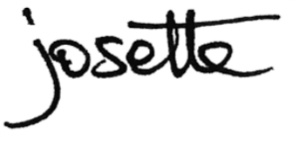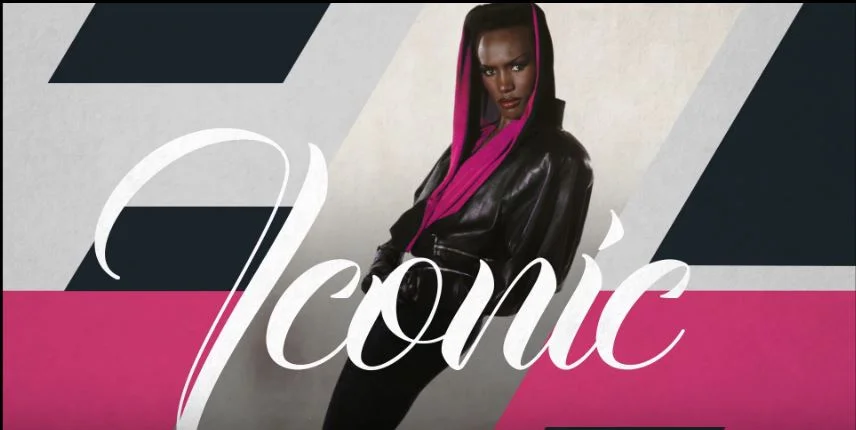Featured Video

Commercial animated and directed by David Kinniburgh.
Josette asked David about the process behind this ad:
"The “Coucou the Cuckoo Learns French” animated ad spot was initially conceptualized in the early fall of 2015. The owners of Coucou, Léa Perret and Marianne Perret, had seen some test footage from a stop motion short film I am directing that had started production earlier that year and asked me if I could conceptualize something for their school. Arriving at the core concept for the piece was a fairly easy task. I have a tendency in my art - especially my animation - to zero in on the more whimsical and fanciful aspects of the world. Coucou has an old cuckoo clock on the wall and creating an adventure in which that bird comes to life at night to learn French seemed to be the obvious choice for the narrative of the ad.
Pre-production was a five month process. The first question that required an answer was discovering what our little bird star was to look like. For this, I enlisted the help of Maya Borenstein, fabulous artist and lead sculptor for the creature creation in my short film. Every avenue was traveled, from actual cuckoo birds to traditional cuckoo clock carvings to artists’ renditions in both fine art and children’s media. We created a gallery of birds, arriving at the final puppet through a mixture of our favorite found sculptures and Maya’s own creative intuition and interpretation of my spoken ideas.
The second question was whether or not to shoot on-location. With stop motion, once a shot begins any small, non-deliberate movements in the set or production equipment, no matter how minute, can jeopardize a shot . The smaller the scale you are working, the smaller the margin of error becomes; to shoot on-location at Coucou would necessitate a very small puppet, making the animation process that much more delicate. In the end, I decided that the value of shooting on location - having the bird really and truly interacting with the materials in the same environment as the prospective students - outweighed the hazards of skipping to the safer approach involving my studio, several bright, stable lights and a green screen.
I use an industry standard animation software, Dragonframe, which allows the animator real time playback, onion skinning, the ability to match video and audio to the animation, and the use of a wide array of helpful, stop-motion specific tools. Armed thusly, and with an extreme overconfidence that things would all be going my way, I went in to Coucou at around noon on a Friday in mid-July, 2016, to begin production. It wasn’t until I had almost completed the first shot, several hours later, that I became acquainted with what would prove to be the true and chief difficulty with animating on-location. The first time through the shot I did not notice that the camera was constantly rocking up and down on the floorboards depending on where I was standing when the shutter released - my weight shifting the old wood and putting a subtle slant in the ground upon which the tripod was set. The shot was compromised and animation had to begin again from the top. Over the course of the next several weeks I found and recorded every inch of serviceable vs. potentially disastrous floor space in Coucou. It was in this way that most of my animating ended up taking place on a small bar area in the front room of the school. In post, I ended up rotoscoping that entire first shot - cutting the bird out of its background and putting it on a plate (still photograph) of the empty room. In the final ad, you can’t even tell which shot this was on the first several watches (hint: I did not shoot the scenes in order).
Things all said and done, production for “Coucou the Cuckoo Learns French” took three months, exclusively shooting on Fridays from mid-July to late-October. The average shoot day lasted 18 hours - beginning a little after noon on Fridays after their final class and wrapping about 6 or 7am Saturday morning.
After production wrapped, I entered into two months of post-production. The first step after making an animation is going through the photo sets and making fixes to remove any wires, wax, or other instruments used to aid in freezing the movement of the subject and the props frame-by-frame. This is also the time in which any accidental shadows or light flicker can be removed. This part of the post-process was the most time consuming. I used a mixture of Adobe Photoshop and After Effects to clean up and create the raw video footage for the edit.
Once the final edit was completed, I did some basic color work to the footage in order to match the animation and the live action sequences and then applied an additional color grade over the whole ad to give it a mood. After this was completed, I created and added the animations for the end titles. The final touch for the piece was the sound and score. The environmental sounds are a mixture of live foley I recorded on-location and found sounds from the internet. The score is an original composition that I wrote and recorded in my home studio.
In the end, I delivered two versions of the advertisement - the theatrical cut and the slightly longer web version; the latter of which I consider the “director’s cut” of the ad for the addition of expository material that rounds out the piece’s narrative.
This ad, music, motion and color, in my mind is the shortest of short films, and something I am extraordinarily proud to have made. It was a hugely rewarding project, and who knows? The adventures of Coucou the Cuckoo may yet continue!"

The official video for the beautiful single Passade Digitale by talented up and coming French singer Marie-Flore. On heavy rotation in the Josette office.
Directed by Boris Barthès and Marie-Flore

As a French woman I'm over the whole "French women do it better" articles polluting American publications, but I make an exception for Violette. I love her makeup tutorials not only because they are attainable but also because the production quality of the videos is so chic. She offers a refreshing alternative to heavy contouring and painted on eyebrows for those of us who don't feel comfortable with a full beat. Check out this video and you'll see why it's easy to fall into a #violettevortex and binge on her tutorials.

MUSIC VIDEO
With members split between New York City and the small town of Beverly Massachusetts, The Jaguar Club have been making indie rock with post punk and electronic leanings since 2006. The band has released 3 EPs, an LP and several singles over the years. Following the release of 'Close' in early 2015 they toured extensively, playing clubs, theaters, festivals, and dive bars throughout the US and UK. Having recently completed some US touring supporting Scottish rockers Idlewild, the band is busily writing and recording a full length LP.
The song 'Hard Cider' is taken from the 'Close' EP and was animated/directed by The Jaguar Club's lead singer William Popadic.
JOSETTE asked William about his process and his inspiration for the video:
"My original idea was sort of a riff on The Seventh Seal, and I was going to shoot a bunch of B&W Super 8 of my friend Dave (who is Swedish and doesn't not look like a young Max von Sydow) walking around smoldering ruins with a sword. It eventually became clear that the look I had in mind was going to be sort of impossible with the limitations I had as far as time, crew, and budget.
So I started thinking about it as stop motion animation, which I have real love for and have dabbled in a bit prior to making this. I had the first tracking shot (which is kinda Citizen Kane inspired) in my mind and then the 'story' (such as it is) came from there. I watched a lot of Roman Polanski's B&W movies while I was planning it out, especially Cul de Sac, Macbeth, and Repulsion. Once I started in earnest it took me about 4 months to make, working at night mostly in my damp basement.
It was roughly storyboarded but I did let myself improvise quite a bit as I was shooting, which is one of the things I have come to really enjoy about stop motion as opposed to drawn animation. My process was basically just lots of hours in the basement, and lots of trips to the local art supplies store. I shot with a DSLR controlled by this really buggy software on my mac because I was too cheap to buy the good stuff. The live action/drawn memory scenes were shot in a forest near my house and drawn on an iPad app. The look of white drawings over B&W footage was something I had wanted to mess around with for awhile, and when I was searching for a way to set the memories apart from the story line it seemed like a nice fit. It took forever, but it was really enjoyable to make and I'm eager to do more of it.
Stop motion filmmaking is this great mix of movies and theater, where you simultaneously get to be the DP, the production designer, the effects crew, and still do all of the acting! I'm about to head back into the basement for a full year to work on a new stop motion film (not a music video) with a ton of sets and more expressive characters, and I'll definitely be heeding the lessons learned making Hard Cider."

Pamela Anderson has a cameo in French pop star Julien Dore's video for his single Le Lac. Also featuring a tiny motorcycle and a chinchilla.
Directed by Julien Dore and Brice VDH

A wonderful short film by JW Griffiths. Winner of the Nokia Shorts Competition 2011.

The full Odyssey of videos as a feature film for Florence and The Machines' album How Big How Blue How Beautiful.
Directed by Vincent Haycock

One of our favorite tracks from Tamaryn's album Cranekiss performed live for KEXP. We just can't resist an 80s sound with a modern vibe and a dialogue sample from the film Paris, Texas. With the always enchanting Jennie Vee on the bass.

The Making Of the commercial for the perfume Flower by Kenzo. The brand takes its iconic poppy to iconic Brasilia, Brazil, with the National Congress building designed by legendary architect Oscar Niemeyer as its set.
Directed by Patrick Guedj

This little guy takes us on a tour to demystify public art.
Produced by KQED ART SCHOOL

From 2012 but still one of our favorites, the music video for Pale's single Too Much is hypnotizing.
Directed by Jesse John Jenkins, produced by Partizan
GRACE JONES IS ICONIC - M2M FASHION CHANNEL
The ABCs of Grace Jones, the chic fearless badass gender-bending multi-talented supermodel queen. Grace Jones is every last thing! Watch on the M2M channel site and discover more amazing fashion shorts.

Over images of Hong Kong by Linda Brownlee, designer Simone Rocha reflects on how women of her grandmother's generation dress, their sartorial precision, and how it has influenced her way of thinking about clothing.
Directed by Linda Brownlee. Part of the series The Way We Dress for NOWNESS, one of our favorite websites.



